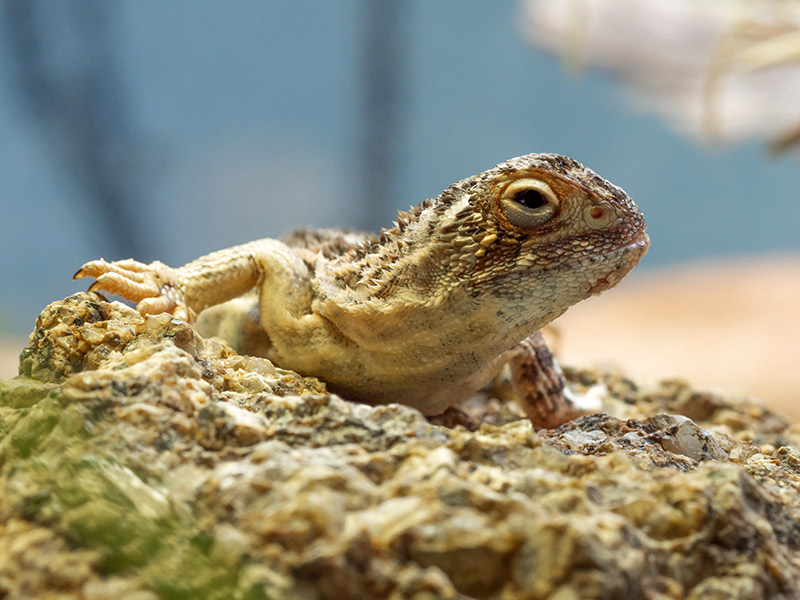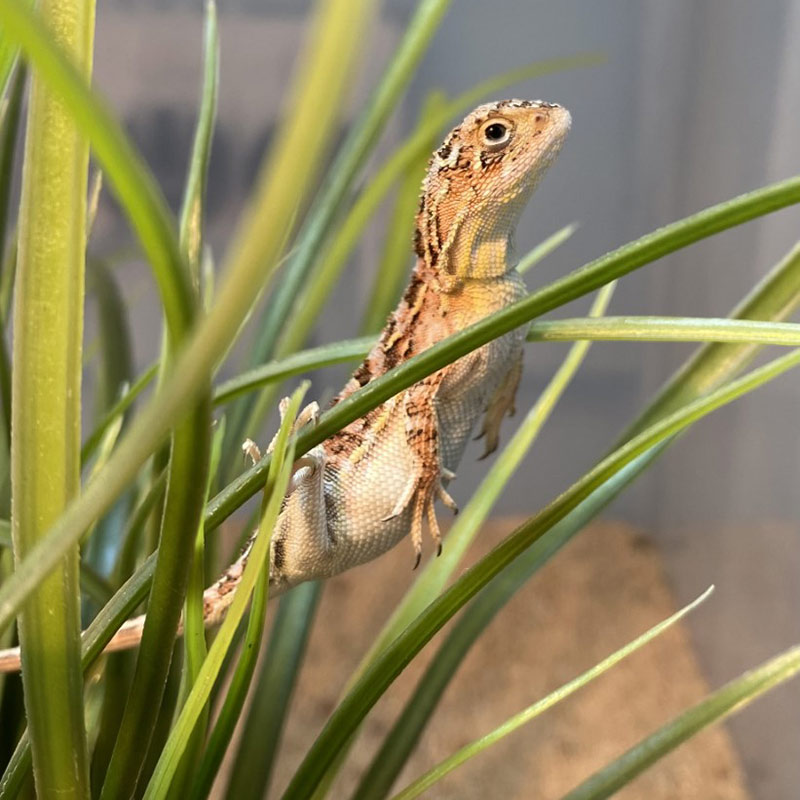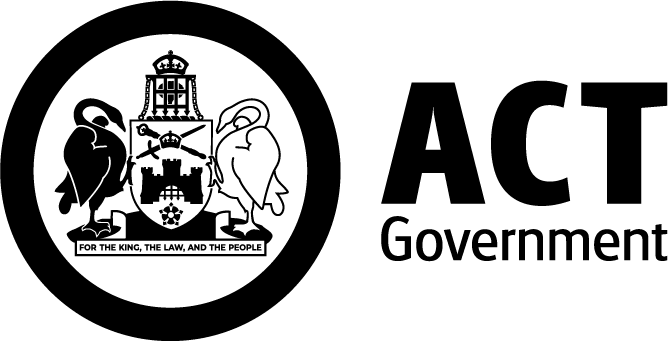
The Canberra Grassland Earless Dragon (Tympanocryptis lineata) is a small lizard found at higher, cooler altitudes than most earless dragons. It is usually less than 150 millimetres long and weighs 5–9 grams. Each Grassland Earless Dragon has distinctive markings on its back.
Grassland Earless Dragons live in frost-hollow grasslands that usually have had little or no ploughing or pasture improvement. They like well-drained sites dominated by Tall Speargrass and shorter Wallaby Grass, with patches of tussocks and open spaces between them.
The species uses arthropod burrows, particularly Wolf Spider and Canberra Raspy Cricket burrows, for shelter and nests. They eat a variety of small invertebrates, particularly ants, beetles, spiders and moths (including moth larvae).
During the breeding season, subadults and adults often have yellow-orange or reddish coloration on their throat, sides of head and flanks. In the wild, Grassland Earless Dragon are short lived, with females usually producing only one clutch of eggs, or two if conditions are good; one in spring and the second in summer. The females lay between three and seven eggs in a clutch (but most commonly around four eggs). They can live several years in captivity.
Protecting our local dragons
Grassland Earless Dragon are endangered under ACT and national legislation. Having been formally recognised as a distinct species of earless dragon in 2019, Tympanocryptis lineata are found only in the ACT region. Their Natural Temperate Grassland (3.9 MB) habitat is only a tiny fraction of its pre-European settlement extent. Remaining populations are threatened by further habitat loss, fragmentation and degradation, predation, and climate change.

The Grassland Earless Dragon action plan (519.5 KB) sets out priorities and actions to protect, restore and monitor remaining Grassland Earless Dragon habitat and populations in the ACT. Annual Grassland Earless Dragon population and habitat monitoring occurs across all tenure types in the ACT including nature reserve, rural lease, unleased and Commonwealth land. There are also programs that aim to evaluate the effectiveness of management actions such as herbage mass management, ecological burns and weed control.
Critical to the long-term survival of this severely threatened species, a breeding facility for Canberra Grassland Earless Dragons opened at Tidbinbilla Nature Reserve in 2021. The initial breeding colony of dragons will start an ‘insurance population’ to guard against extinction and provide a source of genetically diverse animals for eventual reintroduction to the wild. Ecologists will also observe them as part of their research to help conserve and manage this species in the face of threats. Threats to the Grassland Earless Dragon include altered grazing regimes, altered fire regimes, weed invasion, non-native predators, habitat destruction, and habitat and population fragmentation.
In its first ten months, the Tidbinbilla breeding facility bred 30 critically endangered Grassland Earless Dragons. Rory, pictured here, was the first Grassland Earless Dragon to be born as part of the captive breeding program and named after an Ectotherm Keeper at Melbourne Zoo. At 4 months old, Rory was already full-sized and will be ready to breed in Spring.
The facility is another critical and flagship breeding program being undertaken at Tidbinbilla Nature Reserve by the ACT Government. Project partners include the Melbourne Zoo and University of Canberra.
From 2020, the ACT Government provided $2.1 million over three years for the initial stage of the project, which includes work to restore and re-connect habitat to help Grassland Earless Dragon and other grassland species survive in the landscape.
The breeding facility
The purpose-built facility, along with a specially designed quarantine facility, can house up to 80 of the dragons.
The biosecure facility will keep diseases out and provide optimal conditions for the dragons’ wellbeing. Each dragon will have its own space - essentially a dry aquarium - with everything it needs, such as a burrow, grasses to climb on and a basking platform.
Larger outdoor predator-proof ring tanks will allow ecologists to observe Grassland Earless Dragons in a more natural environment to provide important information to help manage their eventual release back into the wild.
Melbourne Zoo and the University of Canberra have pioneered captive breeding of Grassland Earless Dragon over many years and have passed their specialist knowledge on to the Threatened Species Officers at Tidbinbilla Nature Reserve who will be responsible for managing the colony.
Melbourne Zoo provided a number of Canberra Grassland Earless Dragons from their captive breeding program and will continue to provide more juveniles over coming years. Other Grassland Earless Dragons will be sourced from the wild and the University of Canberra, which also has a small captive colony.
The University of Canberra will take the lead on the Canberra Grassland Earless Dragon’s genomic sequencing research to help with the pairing of the dragons. University researchers and post-graduate students will also study the dragon’s population dynamics and continue current research on improving detection of the lizards in the wild.
Matchmaking
Grassland Earless Dragon are not the easiest of animals to breed. They are very territorial, and females like to choose their own mates. Matchmaking requires identifying several suitable males and introducing them to the female until she finds ‘the one’. Our Tidbinbilla staff are receiving matchmaking tips from experienced colleagues at Melbourne Zoo and the University of Canberra.
Matches will be decided, not in heaven, but in the laboratory. The University of Canberra will genotype the animals (that is, understand the variation in genes of each individual) and run computer simulations to find which individuals should be paired to create the best pedigree and a genetically robust captive population. This tool allows us to assess gene flow within a population and be able to assess the genetic contribution that animals will make to subsequent generations.
Genetic analysis and matchmaking programs are essential as our wild populations are increasingly separated from each other by roads, development, and environmental factors. Consequently, populations have not benefitted from sharing their genes. This project will bring the genetic variation found across different wild populations into the captive population to make it as genetically diverse as possible prior to releasing captive bred dragons into the wild.
This genetic variation should result in greater potential for disease resistance, drought tolerance and other factors that help the dragon survive under different environmental pressures.
Habitat restoration
To give the Canberra Grassland Earless Dragon and other grassland species the best possible opportunity to survive and thrive, we are restoring and reconnecting areas of Natural Temperate Grassland habitat in the ACT. We are also assessing potential impacts of climate shifts on the viability of future habitats and release sites (7.1 MB).
Research and monitoring
Robust science underpins and guides adaptive management for conservation in the ACT (view the Environment, Planning and Sustainable Development Directorate (EPSDD) Science Plan (10.3 MB)). Research and monitoring are integral to the success of our threatened species programs by informing future management strategies and effective threat mitigation.
The ACT Government Grassland Earless Dragon and grassland ecosystems research program includes:
- investigating the impact of threats faced by dragons such as climate change, predation, and habitat degradation and fragmentation
- effectiveness of adaptative management and mitigation actions
- species-specific research such as the role of invertebrates in creating habitat (burrows) for dragons to shelter in, dragon mating and territoriality behaviours and enhanced detection techniques.
To find out more about EPSDD ecological research and monitoring, check the Grassland Earless Dragon monitoring dashboard, EPSDD Science Platform and our Environmental Offsets research pages.
To find out which offset sites manage Natural Temperate Grassland habitat, see strategic assessments or individual projects.
Back to the wild
Wild releases of Grassland Earless Dragon are several years away. We need to understand threats to Grassland Earless Dragon populations and how we can prevent or find ways to manage them. We also need to make sure the habitat is suitable and threats to Grassland Earless Dragon are well managed.
It is likely that soft-release enclosures will be developed on the reserves to help captive bred Grassland Earless Dragons to slowly become accustomed to being wild. The enclosures will initially be predator proof but will gradually be opened to the wild once the dragons become established.
Our partners
The ACT Government would like to thank its partners in this project.
The University of Canberra has been researching Grassland Earless Dragons and working with ACT Government for over 15 years.
The University of Canberra plays a lead role in behavioural, genetic and ecological research of the Canberra Grassland Earless Dragon. The university will take the lead on genomic sequencing of the Grassland Earless Dragons to assist with captive breeding matchmaking and they will also conduct research on improving detection of the Grassland Earless Dragon in the wild.
There is potential for exchange of Grassland Earless Dragon between Tidbinbilla and the university’s captive colony to help maintain genetic diversity within the colonies, producing animals that are more genetically diverse and therefore more likely to survive and breed in the wild.
Melbourne Zoo has a captive colony of Grassland Earless Dragons.
The zoo has been generous in providing dragons to establish Tidbinbilla’s colony will continue to provide juvenile dragons to Tidbinbilla in coming years.
The zoo is also sharing its expertise in husbandry and breeding techniques developed over several years with threatened species officers at Tidbinbilla Nature Reserve.
The ACT Government collaborates with the Australian Government Department of Defence to monitor and conduct research on Grassland Earless Dragons at the Majura Training Area.
